Being Reports on Various New Zealand Towns and Country Places and On Some of the Doings of Their People as Described in Korero, Magazine of the Army Education Welfare Service. Korero was an illustrated troop magazine, a fortnightly bulletin that contained articles, sketches and verse of interest to members of the Armed Forces. Contributions were sought from individuals within the New Zealand Armed Forces and were intended to give New Zealanders serving overseas a brief survey of the towns and districts they had left. A maximum of £3 in canteen orders was made as payment. The surveys are not profound social studies nor are they superficial - but they are observant and sympathetic. Drawings were used rather than photographs as photographs did not reproduce well on newsprint. Illustrated with excellent black and white sketches. Korero is Maori for talk, discussion or meeting.
-

-
 By late May 1940 the German Army had raced across Northern France cutting the Allied armies in two. The British Expeditionary Force ,and thousands of French and Belgian soldiers, found themselves squeezed into a ever smaller pocket by the Wehrmacht while the Luftwaffe pounded them from the sky. For nine terrible days they held their ground until - eventually - they had to evacuate. A quarter of a million men battled their way across the bullet-swept beaches to ships - and escape. This is the story of what is simultaneously a terrible defeat and a stirring victory.
By late May 1940 the German Army had raced across Northern France cutting the Allied armies in two. The British Expeditionary Force ,and thousands of French and Belgian soldiers, found themselves squeezed into a ever smaller pocket by the Wehrmacht while the Luftwaffe pounded them from the sky. For nine terrible days they held their ground until - eventually - they had to evacuate. A quarter of a million men battled their way across the bullet-swept beaches to ships - and escape. This is the story of what is simultaneously a terrible defeat and a stirring victory. -
 In many ways, the Digger is a study in contradictions: he doesn't crave war, yet he will fight with unequalled ferocity; he hates spit and polish but will hold his discipline under the most trying conditions; he is tough, yet compassionate; he hates his enemy until he surrenders, then is generous in victory; he despises histrionics but will cry unashamedly at the loss of a mate...The Digger is a key piece of the complex jigsaw puzzler that makes up 'The Australian' - but who is the Digger, exacatly? What elements have gone into forging his spirit?They have won acclaim for their fighting prowess and bravery, while retaining their larrikin spirit, their compassion and their strong sense of mateship. Those who fought in the trenches of Gallipoli, the Somme and Ypres have an immediate kinship with those who followed in NorthAfrica and New Guinea; then later in Korea, Vietnam, East Timor, Iran and Iraq. Australians can be proud of the heritage our Diggers have bequeathed to us. Illustrated with black and white photos.
In many ways, the Digger is a study in contradictions: he doesn't crave war, yet he will fight with unequalled ferocity; he hates spit and polish but will hold his discipline under the most trying conditions; he is tough, yet compassionate; he hates his enemy until he surrenders, then is generous in victory; he despises histrionics but will cry unashamedly at the loss of a mate...The Digger is a key piece of the complex jigsaw puzzler that makes up 'The Australian' - but who is the Digger, exacatly? What elements have gone into forging his spirit?They have won acclaim for their fighting prowess and bravery, while retaining their larrikin spirit, their compassion and their strong sense of mateship. Those who fought in the trenches of Gallipoli, the Somme and Ypres have an immediate kinship with those who followed in NorthAfrica and New Guinea; then later in Korea, Vietnam, East Timor, Iran and Iraq. Australians can be proud of the heritage our Diggers have bequeathed to us. Illustrated with black and white photos. -

The author assesses and explains the role of Goering, dismissing the popular image of the corrupt and indolent buccaneer in order to show the central and serious political role that Goering played in the Third Reich. He shows all facets of Goering's personality, as well as the political context in which he exercised so much power.
-
 The Von Bock memoirs allow the reader to see the entire drama of the Second World War through the eyes of one of Germany's most important military commanders. After the attacks on Poland and Western Europe, campaigns that he helped bring to a successful conclusion, Von Bock became Commander-in-Chief of Army Group Center which carried out the main drive on Moscow during Operation Barbarossa and brought the Red Army to the verge of collapse. Hitler relieved Von Bock when the German offensive bogged down during the winter of 1941/1942. After he returned as Commander-in-Chief of Army Group South, Von Bock was eventually placed in temporary 'retirement' when he critised Hitler's division of forces against Stalingrad and the Caucasus - and the road to catastrophe began. Army commanders like Hoth, Guderian, Kluge and Paulus served under Von Bock, while at his side was his nephew Henning von Tresckow, who led the most active resistance movement against Hitler, and Carl-Hans von Hardenberg, a friend and advisor of Von Stauffenberg. Their efforts to win him over to the resistance failed, yet Von Bock the pronounced resistance sentiments among his staff, and even became privy to the attempted assassination of Hitler on July 20, 1944. This book allows us to reassess Fedor Von Bock, whose complex personality is revealed by his diary entries.
The Von Bock memoirs allow the reader to see the entire drama of the Second World War through the eyes of one of Germany's most important military commanders. After the attacks on Poland and Western Europe, campaigns that he helped bring to a successful conclusion, Von Bock became Commander-in-Chief of Army Group Center which carried out the main drive on Moscow during Operation Barbarossa and brought the Red Army to the verge of collapse. Hitler relieved Von Bock when the German offensive bogged down during the winter of 1941/1942. After he returned as Commander-in-Chief of Army Group South, Von Bock was eventually placed in temporary 'retirement' when he critised Hitler's division of forces against Stalingrad and the Caucasus - and the road to catastrophe began. Army commanders like Hoth, Guderian, Kluge and Paulus served under Von Bock, while at his side was his nephew Henning von Tresckow, who led the most active resistance movement against Hitler, and Carl-Hans von Hardenberg, a friend and advisor of Von Stauffenberg. Their efforts to win him over to the resistance failed, yet Von Bock the pronounced resistance sentiments among his staff, and even became privy to the attempted assassination of Hitler on July 20, 1944. This book allows us to reassess Fedor Von Bock, whose complex personality is revealed by his diary entries. -

From the author of The Longest Day. On Monday, April 16, 1945, an artillery barrage announced the opening Russian attack against Berlin. Russian troops were less than thirty-eight miles from Berlins centre. In fourteen days Hitler would be dead. In twenty-one days, the war would be over. Forty-five miles to the west, advance units of the U.S. Ninth army were angrily and reluctantly turning back. Berlin was no longer a military objective. This book is the story of three weeks in which the city of Berlin - gutted, smouldering, terrorised, yet miraculously still alive - was the focal point of millions of lives: the last obstacle of the triumphant Allies, the last defence for the Germans and the last refuge for Hitler. Illustrated with black and white photos.
-

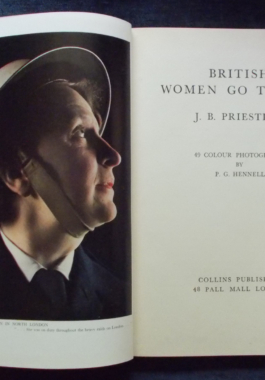 An on-the-spot record of what the women of England were doing in World War II : The land army, civil defence, munitions, communications, the home war effort and the domestic and economic consequences of women doing jobs that had been in the traditional male domain. Full of handsome colour plates by P.C. Hennel showing this band of determined women: servicing guns on a torpedo boat, dispatch riding, changing sparking plugs on a training aircraft, handling the barrage balloon, fitting the cowling to the motor of a Halifax bomber and extinguishing an explosive incendiary bomb. A real piece of history.
An on-the-spot record of what the women of England were doing in World War II : The land army, civil defence, munitions, communications, the home war effort and the domestic and economic consequences of women doing jobs that had been in the traditional male domain. Full of handsome colour plates by P.C. Hennel showing this band of determined women: servicing guns on a torpedo boat, dispatch riding, changing sparking plugs on a training aircraft, handling the barrage balloon, fitting the cowling to the motor of a Halifax bomber and extinguishing an explosive incendiary bomb. A real piece of history. -
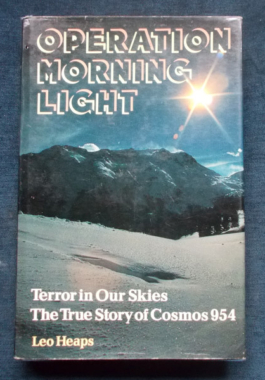 December, 1977: an urgent messaged was flashed from NORAD that a Soviet satellite had begun to malfunction by flipping out of its orbit - and was going to crash into the earth's surface. What followed was a real-life science fiction nightmare as scientists and politicians from America, Canada and the Soviet Union became embroiled in a terrifying tangle of intrigue and guessing games. Now the full story of this nightmare is told.
December, 1977: an urgent messaged was flashed from NORAD that a Soviet satellite had begun to malfunction by flipping out of its orbit - and was going to crash into the earth's surface. What followed was a real-life science fiction nightmare as scientists and politicians from America, Canada and the Soviet Union became embroiled in a terrifying tangle of intrigue and guessing games. Now the full story of this nightmare is told. -
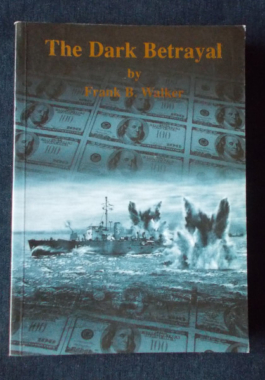
Ken Bartlett, an Australian sailor in a corvette in the Atlantic, took on a cloak-and-dagger mission into Nazi Germany. It was the start of a long and dangerous trail that led him to suspect that Allied firms traded with Germany and Japan during World War II. After arduous service in corvettes in both the Atlantic and the Pacific, he returned to his job as a journalist and followed the scent of the treason trade. This proved even more hazardous, with the FBI, CIA and thugs hired by the double-dealers out to get him. He achieved a victory - yet it was bitter.
-
 Most dramas end in anti-climax, but not in Nazi Germany. Everything about its demise was tragic crescendo. This is a dramatic countdown of the final months of World War II in Europe, bringing to life the waning power and the ultimate submission of the Third Reich. To reconstruct the tumultuous hundred days between Yalta and the fall of Berlin, John Toland traveled more than 100,000 miles in twenty-one countries and interviewed more than six hundred people - from Hitler’s personal chauffeur to Generals von Manteuffel, Wenck, and Heinrici; from underground leaders to diplomats; from top Allied field commanders to brave young GIs. When it was first published, The Last 100 Days made history, revealing after-action reports, staff journals, and top-secret messages and personal documents previously unavailable to historians. Illustrated with black and white archival photographs.
Most dramas end in anti-climax, but not in Nazi Germany. Everything about its demise was tragic crescendo. This is a dramatic countdown of the final months of World War II in Europe, bringing to life the waning power and the ultimate submission of the Third Reich. To reconstruct the tumultuous hundred days between Yalta and the fall of Berlin, John Toland traveled more than 100,000 miles in twenty-one countries and interviewed more than six hundred people - from Hitler’s personal chauffeur to Generals von Manteuffel, Wenck, and Heinrici; from underground leaders to diplomats; from top Allied field commanders to brave young GIs. When it was first published, The Last 100 Days made history, revealing after-action reports, staff journals, and top-secret messages and personal documents previously unavailable to historians. Illustrated with black and white archival photographs. -

Vietnam: Alan Watt
$15.00This Australian analysis was the fourth in a series of background books sponsored by the Australian Institute of International Affairs. This book dispassionately consider the much-discussed factual and legal consequences of the 1954 international agreements with an appraisal of the circumstances of Australian and American intervention as well as the arguments for and against involvement. -
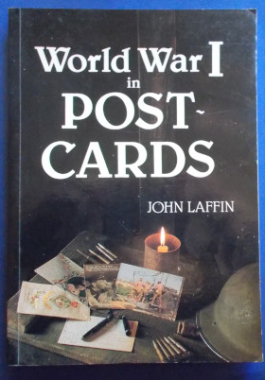 The extraordinary phenomenon of the war postcard - reflections of the full range of responses to the most murderous and ghastly of all wars. The chapters herein include: story postcards, military subjects, heroism and agony, religious themes, humour, animal and field postcards - even those embroidered with silk and very beautiful still today. Even propaganda is represented. Almost three hundred post cards are reproduced - individual historic documents of a bygone age. Photos in colour and black and white.
The extraordinary phenomenon of the war postcard - reflections of the full range of responses to the most murderous and ghastly of all wars. The chapters herein include: story postcards, military subjects, heroism and agony, religious themes, humour, animal and field postcards - even those embroidered with silk and very beautiful still today. Even propaganda is represented. Almost three hundred post cards are reproduced - individual historic documents of a bygone age. Photos in colour and black and white. -
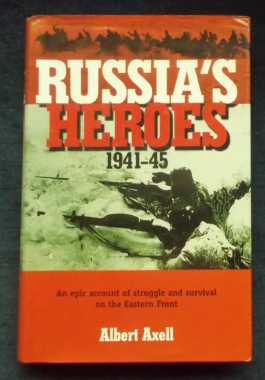 For four years in World War II, out of an unquestioned love for their mother country, the Russian people heroically defended their soil with their blood. Here is the full story of the valor of the sons and daughters, soldiers and villagers, Cossacks and snipers who battled in Moscow and Stalingrad, in the Caucasus and the Arctic, at the Brest fortress and Kursk Bulge. From the account of the aging Russian general who suffered drenchings in ice-cold water rather than collaborate with his Nazi captors to that of the nineteen-year-old private who flung himself on the gun port of a German pillbox so that his comrades could advance, these pages not only chronicle extraordinary selfless acts of heroism but also rectify an astonishing oversight in innumerable histories of World War II. With 16 pages of black-and-white photographs.
For four years in World War II, out of an unquestioned love for their mother country, the Russian people heroically defended their soil with their blood. Here is the full story of the valor of the sons and daughters, soldiers and villagers, Cossacks and snipers who battled in Moscow and Stalingrad, in the Caucasus and the Arctic, at the Brest fortress and Kursk Bulge. From the account of the aging Russian general who suffered drenchings in ice-cold water rather than collaborate with his Nazi captors to that of the nineteen-year-old private who flung himself on the gun port of a German pillbox so that his comrades could advance, these pages not only chronicle extraordinary selfless acts of heroism but also rectify an astonishing oversight in innumerable histories of World War II. With 16 pages of black-and-white photographs. -

For the first time since the early sixties there is widespread and growing concern about the possibility of a Third World War, given the massive stockpile of nuclear armaments and the growing tensions between superpowers. The author, the grandson of Winston Churchill, shows how this situation has arisen and provides the facts and figures to ensure a true understanding of the issues at stake. What is the balance of armed power in the world today? What are the chances of either side winning a nuclear war? How should the Western Allies respond to the growing global challenge from Russia? These and more questions are answered - the answers echo the warnings that were made about the threat from Nazi Germany. Those warnings went unheeded.
-
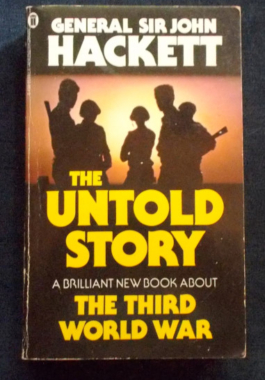 Hackett's first book, The Third World War: August 1985 sold 3,000,000 copies world wide and received great critical acclaim. This new book tells the rest of the story, using much new material, including declassified NATO reports and many hitherto unexplored episodes. It gives the inside story of how the war was planned in Moscow and experienced on the battlefield by the Warsaw Pact forces. Hackett re-examines his hypothetical scenario for World War III, incorporating the technological advances made in the four years since the publication of his first book.
Hackett's first book, The Third World War: August 1985 sold 3,000,000 copies world wide and received great critical acclaim. This new book tells the rest of the story, using much new material, including declassified NATO reports and many hitherto unexplored episodes. It gives the inside story of how the war was planned in Moscow and experienced on the battlefield by the Warsaw Pact forces. Hackett re-examines his hypothetical scenario for World War III, incorporating the technological advances made in the four years since the publication of his first book. -
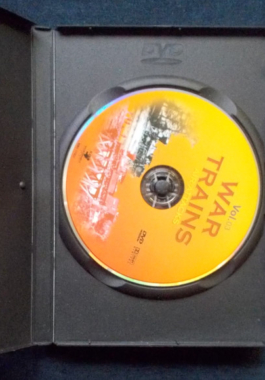
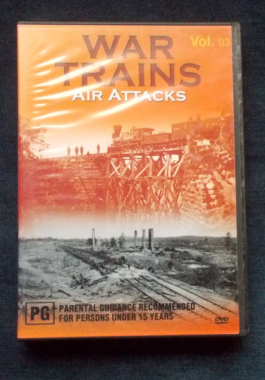 Volume 3 of the award winning series that covers the dynamic history of the railroads during warfare from the American Civil War to World Wars I and II, Korea and Vietnam. Whether under full attack or evacuating the wounded, the trains kept running.
Volume 3 of the award winning series that covers the dynamic history of the railroads during warfare from the American Civil War to World Wars I and II, Korea and Vietnam. Whether under full attack or evacuating the wounded, the trains kept running. -
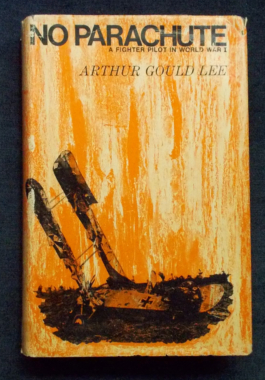 Arthur Gould Lee, who retired as an RAF air vice marshal, had the privilege of recording his feelings and actions during World War I in his letters home and what's more, his letters survived. A courageous 22-year-old, devoted to duty and well aware of the hazards he faced on the Western Front, Lee was more mature than most of his colleagues, in part by virtue of being married and in part because he had had the good fortune to have crashed during training, allowing him to log more hours of flight training than the average replacement pilot. He didn’t like the fact that the Germans had superior aircraft, and noted the qualitative differences in opposing Albatross D.Is, D.IIs and D.IIIs, the latter dubbed the “V-strutter” and carrying two machine guns to the single one carried by the Sopwith Pup. He writes about flying through a shell-laden sky, vulnerable to bullets from above and below. He never forgot the RFC's needless sacrifices and examines the failure of the Army High Command to provide efficient planes until mid-1917 and parachutes throughout the entire war. With black and white photos.
Arthur Gould Lee, who retired as an RAF air vice marshal, had the privilege of recording his feelings and actions during World War I in his letters home and what's more, his letters survived. A courageous 22-year-old, devoted to duty and well aware of the hazards he faced on the Western Front, Lee was more mature than most of his colleagues, in part by virtue of being married and in part because he had had the good fortune to have crashed during training, allowing him to log more hours of flight training than the average replacement pilot. He didn’t like the fact that the Germans had superior aircraft, and noted the qualitative differences in opposing Albatross D.Is, D.IIs and D.IIIs, the latter dubbed the “V-strutter” and carrying two machine guns to the single one carried by the Sopwith Pup. He writes about flying through a shell-laden sky, vulnerable to bullets from above and below. He never forgot the RFC's needless sacrifices and examines the failure of the Army High Command to provide efficient planes until mid-1917 and parachutes throughout the entire war. With black and white photos.











